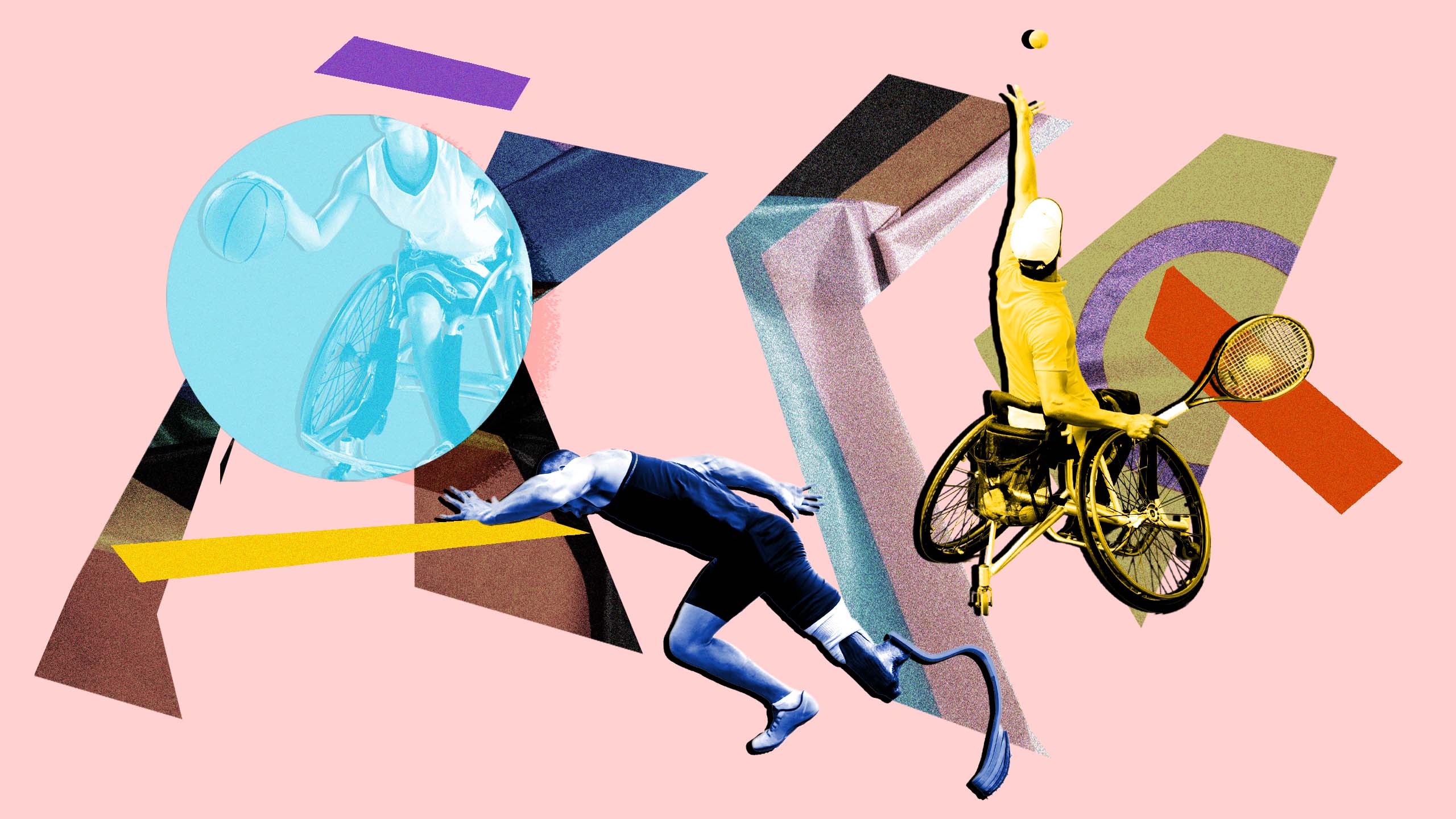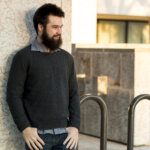In terms of an athletic resumé, Stephanie Wheeler’s success is inarguable. A three-time Paralympian with the USA women’s wheelchair basketball team, with podium finishes as a coach and an athlete, time within wheelchair basketball’s administrative system and her current role as the longtime coach of the University of Illinois’ women’s wheelchair basketball program, she is one of the leading voices when it comes to queer para-athletes.
But that hasn’t always been the case.
“Particularly toward the end of my [playing] career with the national team, I felt like it wasn’t a space where I could say who I was, or be who I was … mostly because of religious aspects that were brought in from coaching staff,” Wheeler says.
When she did come out as gay after her playing career, Wheeler says that it was a positive experience, with those she was worried about—mostly her religious teammates—being onboard. Wheeler didn’t feel that this was a given at the time, partially due to her upbringing in a Baptist household.She says that while there weren’t really any whispers about her queerness during her playing days, there wasn’t exactly a lot of surprise when she came out either.
Historically, the parasport movement has suffered with its inaccessibility to queer and trans athletes in much the same way as its able-bodied counterpart. For much of parasports’ history, it has been difficult for queer athletes to be out and competing, and this lack of open access is particularly stark when it comes to trans athletes. The International Paralympic Committee allows each sport’s governing body to set their own rules when it comes to trans athletes, with some choosing (or being forced) to follow the same trans-exclusionary framework of their Olympic brethren. As a result, any list of publicly out elite para-athletes is short, with many of the athletes coming from just a few sports.
This relative lack of public queer and trans representation comes amidst a sporting backdrop that already has a complicated relationship to gender. While many parasports are coed up until the international level, wheelchair basketball included, and sports like wheelchair rugby are not split based on gender at any point, that doesn’t mean that barriers, including how to facilitate intentionally gendered sports spaces—such as those intended to create more access for women—or something as timeless as a lack of accessible parking have been eradicated.
And yet, there are also movements in a positive direction. Some of the national sporting organizations, like Canada’s Wheelchair Rugby Canada, Wheelchair Basketball Canada and the U.S.’s National Wheelchair Basketball Association have adopted trans-inclusive policies. At the same time, just because queer and trans athletes haven’t always gotten their flowers, doesn’t mean that they haven’t been prominent on the international parasport stage. Danielle Peers—another fellow former wheelchair basketball athlete whom Wheeler considers a key changemaker—is a member of the Canadian Sport Hall of Fame and a holder of the Order of Sport. Valentina Petrillo, an Italian sprinter, will become the first out trans athlete at the Paralympics when she competes in Paris, and organizations like GLAAD have included queer Paralympians in their guides for the Games.
But what about in spaces where parasport and non-disabled sport have crossover? One of the realities of parasport is that the issues plaguing its highest levels inevitably trickle down, in no small part because the elite level is where the funding comes from.
Katie Miyazaki spent her college stand-up basketball career with Simon Fraser University and the University of Saskatchewan before going on to coach at the provincial and international level in wheelchair basketball. She is someone who has navigated both spaces as an athlete, coach and administrator.
“I found the whole environment to parasport very welcoming and open, because there are so many different parts of your identity. There are a lot of athletes who really identify with their disability, and then there’s going to be a lot of queer individuals [where] that queer part of them is a huge part of their identity.”
Miyazaki has since moved on from working within the parasport sector, but says that the small and tight-knit nature of parasport allows for the possibility of a more inclusive environment than she found in able-bodied sport as an athlete.
“I feel like in parasport, because there are fewer participants and people involved, you really have to create a positive environment, or else you’re just not going to have enough people to get to play to get to practice. You have to value each individual a little bit more. Whereas on the able-bodied side, sometimes you’re more likely to be considered just a number, or replaceable, so you have to fit that mould. “
And then there are the sporting spaces where disability may not be front and centre, but is certainly still present. Dr. Claire Carter, an associate professor in gender, religion and critical studies at the University of Regina, researches queer embodiment, including the role of queer-focused sports spaces. They say that the intersection of queerness and disability is a conversation that is currently happening quietly at the recreational level of queer sports leagues as well, even when these competitions aren’t expressly geared toward para-athletes.
“What I think has been pretty clear is that leagues that kind of [have] opened up to be like, ‘Okay, let’s open up our league to be trans-inclusive, genderqueer-inclusive.’” they say. “We have to challenge our assumptions about how bodies play, how bodies move, how we can maybe do this game, and then that opens up another layer.”
“I’ve really started to appreciate the importance of speaking up and sharing my story and helping to ensure that sport is a safe place for the LGBTQ2S+ community”
Wheeler says that her identity shows up in all parts of her coaching, including recruiting. For her, that’s part of creating an affirming space for her athletes.
“It allows me to say, ‘Well, this is who we are in Illinois.’ We create an affirming space for everyone on our team. That we have queer student athletes on our team; we have student athletes from different racial backgrounds, from different ethnic backgrounds, from different religions. And it gives me a chance to then sort of open up and talk about myself a little bit too. I don’t hide that in the recruiting process.”
For Wheeler, providing the space she didn’t always have as an athlete means being open and honest about expectations, attending events like Pride parades when possible and having tough conversations when those involved aren’t meeting inclusivity expectations.
“I didn’t want our space and our program to be the reason that someone felt uncomfortable in sport, that their sport didn’t love them back,” she says. “The second I started coaching, that I was hired here at Illinois, that was one of the very first conversations with the administration here at the time, was just like, ‘This is who I am.’”
But Pride, especially when it comes to the intersection of disability and queerness, can be a complicated thing. Some athletes, like the U.K.’s Lucy Shuker, prefer to let their play do the talking. In a 2020 interview with the BBC, Shuker shared that it was partially her becoming disabled that allowed some family members to accept her sexuality, even if labels didn’t mean all that much to her.
“For my parents, when I had my accident, they got to meet a lot of my friends they potentially wouldn’t have met before. I had friends who were going through transition and my nana actually met them, and then they suddenly realized that just because someone might look a little bit more masculine, that actually they had the biggest of hearts and the gentlest of natures. They actually accepted my sexuality far easier at that point. So, in some ways my accident was a blessing,” she said in the interview.
When asked her updated thoughts about that interview and the current parasport space, Shuker told Xtra that as the Paralympic movement has grown, there has been more of an opportunity to be public.
“I think it is more recently where I have been asked a bit more, that I’ve really started to appreciate the importance of speaking up and sharing my story and helping to ensure that sport is a safe place for the LGBTQ2S+ community … I think something that I could have changed is to have spoken up about this part of my life earlier, although I would say that it is also only in more recent years that the profile of Paralympic sport has increased and there have become more opportunities to speak up and to be heard.”
For those who don’t feel comfortable being as out as others, Wheeler says that, something as simple as putting up an inclusive space sticker in their dorm can be an indicator to their teammates that they aren’t alone in parasport spaces.Parasports are not inherently safe spaces, so Wheeler says that an area allied athletes have to think about is safety when it comes to interrupting harm coming to their queer teammates, including knowing how to navigate the way a particular organizational structure is set up, something that is magnified when disability is also involved.
“Will you make the situation worse by stepping in? Do you need to call someone else in? Do you feel safe enough to step in? If you know the person, checking in with them afterward. … I think there are lots of things that you can do.”
And, despite the barriers, Shuker is hopeful that the work is being done to allow queer athletes with disabilities at all levels of sport to be out.
“I think this is a really individual decision, and people need to make this when they are ready, and on their terms. But what I would hope is that we are creating more environments where this doesn’t need to be questioned: we are just who we are and the judgment, stigma, discrimination is removed.”


 Why you can trust Xtra
Why you can trust Xtra


